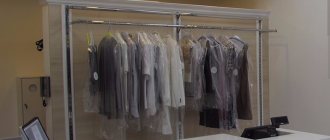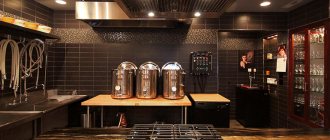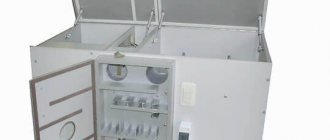Let's look at the main points of starting a pharmacy business. We will try to answer frequently asked questions.
All pharmacy organizations can be divided into two types according to the nature of their activities and the type of services provided:
- these are pharmacies that manufacture medications according to a doctor’s prescription (manufacturing);
- pharmacies that only sell finished medications.
Pharmacies are divided according to the types of drugs authorized for sale, and licenses for the type of activity: pharmacies, pharmacy points, pharmacy kiosks and pharmacy stores. This division is provided for by the list of services in the regulatory requirements for each of them.
It should be noted here that a pharmacy and a pharmacy or kiosk are slightly different things. In order to open a pharmacy kiosk or pharmacy, you do not need to open a pharmacy first.
At its core, a pharmacy is the same pharmacy, the only difference is that a pharmacy is supposed to have two material rooms, and a pharmacy has one.
With the kiosk everything is much worse. It cannot sell prescription drugs, which make up the bulk of the pharmacy's revenue. This is bad.
The most profitable of the entire pharmacy structure are pharmacy points, where all the necessary medications are available. In this case, the buyer does not need to look for other pharmacies. He will come to you and buy everything you need in one place.
If you successfully choose the location where the pharmacy will be opened, it will pay for itself in literally six months. Since its area is smaller, which accordingly affects the rent.
And the pharmacy, in turn, pays for itself much longer, since more requirements are placed on it, and their list is much longer. In the best case, if the location is convenient, the pharmacy pays for itself in two years (this is the standard, but in a shopping center it will be faster).
If you decide to open a pharmacy and don’t know where to start, I’ll tell you everything in order: first you need a firm decision, then the required amount and perseverance in achieving the goal.
And, of course, you need to start by finding a place. This is probably the most crucial stage in this matter.
For example, some entrepreneurs began to open obviously unprofitable pharmacies somewhere in the outback, simply in order to create a network.
Then the above-mentioned pharmacy, which is located on the outskirts, closed for an indefinite period (for example, for renovations), and later, another store appeared there, or a discount pharmacy (usually from a different chain).
Here is the answer to the question “how to open a pharmacy in rural areas?” – it’s much easier there, because you can rent a room cheaper. But the market segment and the purchasing power of rural residents differ from the solvency of urban residents for the worse.
The Russian market is not yet oversaturated with pharmacies and pharmacy points. But if you ask the question: “can an individual entrepreneur open a pharmacy,” the answer is ambiguous. This is possible only if the individual entrepreneur has the appropriate pharmaceutical education.
The logic here is unclear, since an individual entrepreneur can have many different types of business and it is impossible to graduate from 20 universities. Why does a pharmacy opened on an individual entrepreneur need appropriate education if the entrepreneur himself will not work there? Question.
But, nevertheless, pharmacies are more often registered as LLCs. And it is right.
Previously, liability for debts did not extend to the founder. This was a big plus. Now, but new legislation is spreading. Here the mood was a little dampened.
And still LLC is better. Firstly, according to the law, an individual entrepreneur can open only one pharmacy for himself. Yes, in fact, networks are also being opened (the non-binding nature of our laws compensates for their strictness), but it is better to work in the legal field.
Then it’s easier to sell the business. In the case of an LLC, simply change the founders, all licenses remain valid.
Therefore, if you are determined to open up, you should think about everything carefully and thoroughly, study all the pros and cons, and make a final decision about whether it is beneficial for you.
In 2003, a law was passed regarding pharmacies, which created additional difficulties for those wishing to open a pharmacy. According to this law, the requirements for the minimum area of pharmacies have increased. However, later these restrictions were canceled and only the requirements for the mandatory set of premises remained.
By cost
Even with such secrecy, seeming unprofitability, and with all the difficulties in obtaining a license, the pharmacy business is not the most difficult business sector. Creating a small pharmacy will cost you from 40 to 50 thousand dollars, and it will pay off in the first 2 to 3 years.
Now we will move on to the main part, where we will more carefully study the issue regarding the pharmacy business, and find out in practice how profitable it is, and how best to do it.
In recent years, the purchasing power of the population has increased and that is why the pharmacy business has become especially profitable. Not because people began to get sick more often or care more about the health of the body. Today, the average family can afford to buy pharmaceutical products.
Visitors to a pharmacy leave about the same amount as in grocery stores. But the products in the pharmacy are much smaller than the products in stores.
Therefore, to sell for the same amount, pharmacies need to spend much less retail space and spend less on transportation and other expenses. It turns out that a pharmacy is more profitable than a grocery store.
At the present stage of economic development in Russia, the demand for the pharmacy business exceeds supply. Therefore, the pharmacy business can be considered profitable. But, provided the pharmacy is located in a good place.
Buyers are very picky about the location of the pharmacy. Factors such as the proximity of a metro station, large residential complexes, and shopping centers play a decisive role.
The average cost of a ready-made business is about 150 thousand US dollars.
At the same time, the cheapest operating, established pharmacy can be purchased for around 20 thousand dollars, and the most expensive network of pharmacies is about one million dollars.
Often, when a buyer is going to buy an existing pharmacy, the seller inflates the price. Therefore, it is better to know in advance how much it costs, and first answer this question for yourself. The inflated price for a ready-made business can be justified by the fact that a lot of money was invested when opening it. In addition, there may be some amount of unsold goods remaining there.
As I already said, the first thing to do in the opening procedure is to find a suitable premises. There may be several criteria: it is a convenient location for you, it also matters who the owner of the building is, if the area is rented, the lease must be long-term. Issues such as repairs in the pharmacy and establishing contacts with suppliers are also important.
Remember - when purchasing a ready-made business, you always acquire it along with the reputation of this business, along with debt obligations.
This aspect of the issue is very difficult for a non-specialist to assess, so the help of a consultant in purchasing an already operating pharmacy is simply necessary. But, on the other hand, you already know the enterprise’s turnover, costs and can make accurate profit forecasts.
If the pharmacy is weak but profitable, then that’s good. This means that by properly organizing all the operational activities of the purchased pharmacy, you will be able to increase sales volumes and profits.
It is very difficult to find a ready-made pharmacy that is suitable for you, or for this business to satisfy all your needs.
Therefore, if you have the required amount of money, it is better to organize this business yourself.
Medicines are always in demand, and people will buy them at any time, therefore, a pharmacy can pay for itself quite quickly and begin to make a profit.
First you need to decide which pharmacy model you should choose.
There are many options for different pharmacies: this is a pharmacy, or a classic pharmacy, a pharmacy kiosk or a pharmacy mini-market, and all this can grow to the level of a pharmacy chain.
The entire assortment of the pharmacy is divided into medicines and parapharmaceutical products, which include health products and cosmetics.
There are pharmacies with closed and open displays. Here, each type has its pros and cons. But usually in residential areas closed displays are used, while in shopping centers open displays are used.
Some immediately decide that they will focus on selling medicines, while others prefer a wider range of healthy food products, medicinal cosmetics, hygiene products, products for children and diagnostic tools.
Here again, location plays a role. In shopping centers, the share of sales of parapharmaceuticals is usually higher than in sleeping bags.
There are also some nuances, for example: only pharmacies and pharmacy points can sell prescription drugs.
Prescription drugs should not be available at pharmacy kiosks and pharmacy minimarkets. This is where the ineffectiveness of pharmacy kiosks lies.
Consumers have a rather conservative view of a pharmacy. For the Russian buyer, a pharmacy is a place where you can ask “what do you have for a headache?”, and the pharmacist lists everything he can offer.
Therefore, new models of modern pharmacies are not always perceived adequately by the buyer. It is better not to experiment with the introduction of fundamental innovations at the initial stage, when there is no established sales network yet.
There have been cases when existing pharmacies found themselves on the verge of bankruptcy due to the introduction of an American type of pharmacy, selling mainly vitamins and dietary supplements.
It is better, first of all, to stick to traditional patterns of interaction with customers.
When choosing a model, first of all, you have to focus on the availability of funds. Based on our capabilities, we are already determining whether you might be more satisfied with an economical option or a premium pharmacy. This makes a significant difference in investment.
Next, you will have to choose a form of trading: closed or open. It will be cheaper to do closed trade; this will make it possible to reduce costs to $300 per square meter. But the average check with this form of trading will be lower.
When organizing an open display, more money will be required for pharmacy equipment.
With an open form of selling goods, the sales area is increased, while a closed form requires a smaller sales area.
It is better to purchase equipment using available funds, and leasing can be arranged for electronic accounting systems. Because accounting systems are the most important element of trading.
This will make it possible to additionally control operational indicators, for example, employee engagement, length of working hours, as well as track turnover, and monitor what is bought best.
In general, the presence and absence of some necessary drugs greatly affects the attendance of the pharmacy; if the buyer does not find the necessary drug once, he is unlikely to look for it there later.
With a properly configured pharmacy program, you will clearly monitor all the key indicators of the pharmacy - inventory turnover, defects, total and percentage realized markup, warehouse balances and other parameters.
If everything works correctly for you, the physical cabinets in your pharmacy should be empty, since all the goods will be on the sales floor. Even with a monthly turnover of more than five million rubles.
Many people ask: “how long does it take to open a pharmacy?”
Collecting the necessary documents will take about two months, if you do everything purposefully and do not put things off for a long time.
You need to get permission from the SES and firefighters. Then take the entire package of documents to the licensing authority.
Your tasks: select certified personnel, find a suitable premises and make repairs to the premises, supply commercial equipment and, in principle, the pharmacy is ready to start selling the goods. All that's left is to get a license. In total, if you do it within four months, you’re doing great!
A close-knit team is half the success. There is a shortage of specialists in this industry in the market today. Pharmacy staff must be prepared in advance. In addition, employees must undergo a medical examination in advance and obtain health records in accordance with the requirements of the SES.
It will take longer to obtain a license for the relevant type of activity. Here, each region already has its own deadlines. Here it is important to correctly divide tasks by priority, draw up a calendar plan and strictly adhere to it.
The trick here is that some processes can be done in parallel and the speed of opening a pharmacy increases, which saves a lot of money.
Where is the best place to open a pharmacy?
The convenient location of the pharmacy plays a major role in its return on investment. Therefore, you need to carefully choose a location for a future pharmacy. Basically, people only go to pharmacies that are located along the way, or they will go to the nearest pharmacy if necessary.
Therefore, traffic is the most important parameter of trade in a pharmacy. Depending on the traffic, the main set of drugs that are more liquid is determined.
For example, a pharmacy located in a shopping center and a pharmacy located in an airport will experience different traffic. People will buy completely different products.
The model of the pharmacy itself is often highly dependent on traffic. In a prestigious area of the business center, of course, you can set up a pharmacy kiosk, but it is more acceptable to open a large pharmacy in such a place, with a good selection, high prices, coupled with good consultants and quality service.
And in residential areas it is best to open economy class pharmacies. All basic pharmaceutical products should be presented there. But in such areas, people tend to move to competitors’ squares if they appear nearby, so there must be a “zest” of its own. For example, a cumulative discount program.
Today, according to many experts, it is better to open a pharmacy in a large shopping center. The benefits here are obvious: firstly, there is a good flow of potential buyers, and secondly, there are no competitors here, and the place is more secure.
People came with money, ready to make impulse purchases. Therefore, a lot of parapharmaceuticals are sold where the markup is higher and the average bill is correspondingly high.
What do you need to open a pharmacy kiosk?
If you are starting a business from scratch, you first need to go through all the necessary authorities.
Business registration. You can register as an LLC, OJSC, or individual entrepreneur - in the latter case, the owner of the pharmacy kiosk must have a higher pharmaceutical education.
Obtaining a pharmaceutical license is a mandatory requirement for conducting activities to sell medicines.
Additional documents: sanitary and epidemiological conclusion, fire safety certificate, agreements for garbage removal, disinfection of the kiosk premises and waste disposal.
Choosing a room
To create a pharmacy, it is better if the premises are rented, because the complete acquisition of the premises is impractical. And it is advisable to conclude a lease agreement for the longest possible period, with a fixed monthly or quarterly payment.
It is necessary to strive for such a lease agreement that there is a fixed payment, because this can provide economic benefits if prices in general rise.
You will also need to know the procedure for converting residential premises to non-residential premises. Only the premises located on the first two floors can be converted into non-residential premises. There must be a separate entrance from the street.
Houses that are subject to demolition, or in which major repairs are planned, you will not be allowed to transfer non-residential premises.
You will not be able to obtain the desired documents if someone is registered in the apartment, or if there is no direct entrance from the street.
The whole procedure takes place in three stages:
- the issue is resolved by the interdepartmental commission on the use of housing stock;
- the cost of converting residential premises to non-residential premises is decided by the recycling commission and housing management;
- registration with the registration chamber of the right to non-residential premises is carried out.
Business registration
Below are step-by-step instructions on how to open a pharmacy and prepare documents correctly.
We register the business as an individual entrepreneur or LLC. For a large company planning to grow into a network, an LLC is better suited
. This status gives more opportunities when purchasing goods, concluding contracts, and increases the level of trust in the company.
Suitable OKVED codes: 52.31
– “Retail trade of pharmaceutical goods”,
52.12
– “Other retail trade in non-specialized stores”, as well as
52.32
– “Retail trade of medical goods and orthopedic products” and
52.33
– “Retail trade of cosmetic and perfumery goods”.
Besides this, what other documents are needed to open a pharmacy:
- Charter of the company;
- Certificate of registration with the tax office (receipt of TIN and KPP);
- Document from Rospotrebnadzor on compliance with sanitary standards and permission from Rospozharnadzor. Before this, you will need to prepare the retail space for inspections (the corresponding order of the Ministry of Health is “On the sanitary regime of pharmacies”);
- Copies of education certificates from personnel, health records;
- Production control program (you can order development from a special company).
The most difficult thing is to get a conclusion from the SES
. In addition to arranging the premises in accordance with all conditions, the following agreements will be needed: for disinfection and disinfestation, disposal of waste containing mercury, garbage removal, dry cleaning of employees' work clothes, regular medical examinations for employees, and cleaning of the ventilation system.
What time of year is best to open?
When starting out in the pharmacy business, keep in mind that sales are subject to seasonal fluctuations.
In the summer, sales of medicines and related products drop by 20–25%. But from the end of September to the beginning of May there is a consistently high pace of sales.
So, in order to open a pharmacy, it is best to start collecting documents in the summer. With the expectation that work will begin at the end of August.
If your pharmacy is a single one, then it is best to think through the entire advertising campaign at once. In the media, outdoor advertising inside the pharmacy.
For a better start, you can hang a banner on the street, or put up a promotional stand.
When opening a single pharmacy, you must also take into account the fact that it is unlikely that manufacturers will work directly with you. Distributors also offer discounts mainly to pharmacy chains. Discount amounts are tied to purchase volumes. So you have to take into account the fact that incoming prices are higher than those of chain pharmacies.
You will have to build normal business relationships with dozens of distributors, because the buyer needs a wide and varied assortment, since you will not be able to find everything in one place. All this is directly related to the fact that initially you will open one pharmacy.
It is difficult to beat pharmacy chains on price because distributors give them big discounts. You will have to win with the help of the diversity of the presented assortment. So that the buyer does not go for cheapness, but for the opportunity to buy everything in one place. There are also various features, so it’s not all bad.
What is a pharmacy?
In turn, under the pharmacy
also means a retail establishment selling medicines, but:
- its minimum area can be from 70 square meters. m;
- In the structure of the premises of this institution there is often no administration office.
Main functions of pharmacy points:
- sale of medicines to citizens with or without prescriptions;
- sale of herbal medicines;
- sale of medical equipment and other medical products;
- sale of hygiene products;
- release of medicines in accordance with prescriptions, their packaging, as well as subsequent sales;
- providing citizens with free medicines in accordance with the law;
- providing first aid to citizens;
- providing visitors with advice when purchasing medicines.
Accordingly, it is not typical for pharmacy outlets to sell products such as:
- diagnostic tools;
- specialized underwear;
- child care items;
- first aid kits;
- glasses;
- healing mineral water;
- dietary supplements;
- cosmetics;
- medications classified as potent.
Mandatory requirements for a pharmacy premises
A certain set of premises is needed: a sales area, an unpacking room, a material room, a manager’s office, a staff rest room, a wardrobe, a bathroom with a lock (a dry toilet will not work).
Pharmacies must have centralized heating, water supply, exhaust ventilation and sewerage. In addition, 24-hour centralized monitoring of fire and security alarms must be equipped.
Instruments for recording air parameters must be installed in each room where medications are stored. All premises of one pharmacy must be centralized, i.e. isolated from other organizations into a single block.
There are also specific requirements for the decoration of a pharmacy premises. The wall decoration should allow for daily wet cleaning using disinfectants. In addition, the walls must have a high reflective coefficient.
When deciding to open a business, a pharmacy must meet many parameters, for example, if the floor is covered with linoleum, then the seams must be sealed. Linoleum can be replaced with unglazed ceramic tiles.
But if we return to the question of the cost of opening this business, then it will take several thousand dollars just to renovate the premises. You can save on designer decoration, because it is of no use in a pharmacy.
Checks from SES
First of all, the Rospotrebnadzor inspector draws attention to the following points:
- Are the rules of trade for pharmaceutical products observed?
- Do you have all the necessary certificates for the goods?
- Does the premises comply with all sanitary standards;
- Is pricing broken?
- Are the cash registers in working order and do they have the necessary registration?
Pharmacy staff
The work of the pharmacy is headed by a manager with a pharmaceutical education.
The functions of manufacturing and selling drugs and medical devices must be performed by specialists with pharmaceutical education.
A pharmacy kiosk is a healthcare institution organized in places of significant concentration of people, both in health care facilities and for other purposes (shops, train stations, metro, etc.). A pharmacy kiosk can be organized as a branch of a pharmacy or an independent pharmacy establishment with the right of a legal entity.
The main difference between pharmacy points and pharmacy kiosks is their functional purpose. From Order No. 80 of the Ministry of Health of the Russian Federation (as well as paragraph 2 of Article 32 of Law No. 86-FZ) it follows that only over-the-counter dispensing of finished drugs can be carried out through a pharmacy kiosk, while pharmacies can manufacture and dispense drugs according to doctors’ prescriptions.
Functions of a pharmacy kiosk:
1. sale of medicines to the population without a doctor’s prescription; sale of packaged medicinal plant raw materials in original packaging, medical products, personal hygiene items (products);
2. providing the population with the necessary information on the proper use and storage of medications at home;
3. provision of first aid.
Basic requirements for a pharmacy kiosk:
Kiosk equipment:
1. minimum kiosk area – 60 sq.m;
2. the kiosk must have one workplace, isolated from customers by a window with glazed horizontal and vertical display cases and side openings for transferring medicines;
3. the kiosk must be equipped with special pharmacy furniture, equipment, inventory, sanitary clothing for staff;
4. all equipment and external design must meet the requirements of technical aesthetics and be convenient for work;
5. The kiosk must have electricity, a cash register, cabinets with shelves and drawers for storing medicines and medical products, a refrigerator for thermolabile medicines, a work chair and a table for one workplace. The table should be equipped with drawers for storing reference literature, a list of medications, and documentation of the receipt of inventory items;
6. the kiosk must have a closet for storing home and work clothes in accordance with the requirements of the sanitary regime;
7. the pharmacy kiosk must have safety instructions and conditions must be met to ensure occupational safety;
8. The pharmacy kiosk must have conditions for the safety of inventory items.
The pharmacy kiosk must be located in a separate room or a specially isolated block with a mandatory service area for the population.
The building where the pharmacy kiosk is located must have water supply, sewerage, heating and ventilation.
A pharmacy kiosk must have electric lighting; if located in a separate building, it must have autonomous heating.
The external design of the kiosk should contain:
· a sign with the name “pharmacy kiosk” and indicating the organizational and legal form, form of ownership, and operating hours;
· addresses and telephone numbers of on-duty and nearby pharmacies.
To open and operate an independent kiosk, you must have:
Approved Charter;
Seals and stamps;
Current account;
Licenses;
Minimum standards for the area of pharmacy kiosks, m 2
A citizen can buy medicine by visiting a pharmacy or pharmacy. What are these institutions?
How to apply for a license
To open a pharmacy kiosk from scratch, in parallel with searching for premises, you need to obtain a pharmaceutical license for your activities from the Ministry of Health. The cost of the license itself (state fee) is about $100
, and the services of private companies for its registration cost about $1,300.
What a pharmacy must provide for a license:
- A specialist certificate is required from the head of the institution;
- Photocopies of medical education documents from all employees except the cleaning lady. Workers need labor and health records;
- Conclusions of SES and fire supervision;
- Certificate of registration of a legal entity;
- Document on renting premises for a store;
- BTI plan;
- Certificates for purchased equipment.
The entire list of permits and certificates is given in Order of the Government of the Russian Federation No. 489
. The license is issued for five years, after which it will have to be renewed.
Documents for registration
The formal side of the issue in this case may seem much more difficult than when opening any other company, due to the specific nature of the business. Rather, this procedure can be called not registration, but licensing. Below is a list of what you need to submit to the licensing authority to open a pharmacy:
- Copies of documents confirming the right to entrepreneurial activity (constituent documents, extract from the Unified State Register of Individual Entrepreneurs or the Unified State Register of Legal Entities).
- Application for a license, which indicates: a) the scope of activity, a list of functions that the institution will perform; b) complete information about the licensee - name and address of the legal entity, location of the pharmacy.
- Receipt for payment of the license fee.
- Documents for the right to use or own premises for licensed activities.
- Certificate of tax registration of the licensee (copy).
- Certificate for the right to carry out pharmaceutical or pharmacist activities.
- A copy of the conclusion of the sanitary-epidemiological service on the suitability of the premises for this type of activity.
- A copy of the State Fire Supervision Authority's conclusion.











